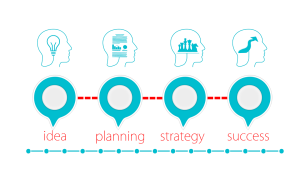While job satisfaction is a common topic of discussion, truly understanding its drivers and how to foster it remains a challenge for many organizations. Job satisfaction is a crucial factor that directly impacts organizational performance, yet many employers struggle to achieve it. A powerful solution can be found in the HIGH5 strengths assessment. By revealing the unique motivations and talents of each employee, the HIGH5 enables organizations to build a strengths-based culture focused on engagement, productivity, and fulfillment.
This data-driven approach offers valuable insights for structuring roles, development plans, and the overall employee experience, helping to unlock potential and maximize satisfaction. That is why HR professionals must understand the factors that can enhance employee satisfaction. It is also important for them to explore how job satisfaction contributes to organizational success. In this article, we will explain the job satisfaction concept and strategies to improve it. Additionally, we will also be looking at the different factors that influence job satisfaction and how to effectively measure it.
What is job satisfaction?
Job satisfaction refers to how engaged and fulfilled employees are in their work. It is also known as the level of satisfaction with their job, linked to feelings of security and safety in the workplace. Factors such as employees’ career development and healthy work-life balance influence job satisfaction levels. Furthermore, it is shaped by employees’ ability to perform their essential duties, the quality of communication within the organization, and the treatment they receive from management. There are two types of job satisfaction: Affective and cognitive. Affective job satisfaction refers to an individual’s holistic emotional reaction to their job, while cognitive focuses on how fulfilled employees are with specific aspects of their employment, such as salary, working hours, or benefits.
Importance of job satisfaction
Job satisfaction should be a top priority for HR professionals, as it influences critical outcomes such as employee retention, productivity, and overall organizational success. One effective way to enhance job satisfaction is through leveraging the HIGH5 strengths assessment. By identifying employees’ unique talents and motivations, organizations can tailor roles, responsibilities, and development opportunities to align with individual strengths. This personalized, strengths-based approach leads to greater engagement and fulfillment.
The HIGH5 assessment offers invaluable insights for aligning individual needs with organizational goals, unlocking potential and driving performance. A satisfied employee is not only loyal to the organization but also serves as a brand ambassador. Employees who are content with their jobs are more committed to the organization’s objectives and are willing to go the extra mile to complete their assigned tasks and responsibilities. They take pride in their work and satisfied employees also take pleasure in their work and contribute selflessly to the team’s success.
HIGH5’s team has created the latest research on employee satisfaction in the US and globally.
Benefits of having a high job satisfaction:
- Decreases employee turnover.
- Reduces employee absenteeism.
- Enhances work performance and productivity
- Reduces the level of unionization.
- Reduces workplace accidents
- Fosters a conducive working environment.
- Drives faster and more sustainably along with increased revenues.
- Improves customer/client satisfaction.
- Improves employees’ ability to handle pressure and change.
- Retains talented employees and top performers
10 effective strategies to enhance job satisfaction
Communication
Communication is essential for maintaining satisfaction on an organizational and individual level. This is achieved by empowering employees to be honest and participative in discussions in the workplace. A safe work environment, where employees can express their opinions freely without fear of repercussions, is key to achieving this.
Organizational Culture
Building a strong organizational culture will positively impact job satisfaction. A great working culture highlights the organization’s core values, vision, and mission, ensuring all employees are aligned. Additionally, it also provides clear guidelines on areas ranging from the organization’s objectives to suitable levels of inter-employee engagement.
Safety
Once a strong organizational culture is in place, a sense of security and stability can enhance employees’ job satisfaction. This sense of security may come from believing that one is part of a growing company with long-term goals. Knowing this will also help employees to instill a sense of belonging towards the organization.
Leadership
Leadership plays a crucial role in keeping employees satisfied and happy. Effective Leadership boosts motivation and inspires teams to achieve goals. This is achieved by ensuring employees accept and understand their communication and instructions. Job satisfaction increases when employees trust that their leaders can lead them through challenges. Recent research indicates a rise in job satisfaction, with leadership playing a key role. Employees who are satisfied with their leadership are 80% more likely to remain in their jobs [1].
Opportunities
Job satisfaction increases when employees are given opportunities to take on challenging tasks. Employees can participate in new and exciting projects while moving away from their daily routine with these opportunities fostering personal and professional growth.
Career advancement
Job satisfaction can improve when employees work with their managers to create a personalized career development plan. Beyond regular performance reviews, employees are more likely to feel satisfied and remain with the organization if they see clear opportunities to grow and advance.
Workplace conditions
Job satisfaction improves when the workplace environment is flexible and collaborative. This includes a workplace that values diverse opinions and perspectives and genuine and constructive feedback. Employees also prefer to work in organizations that are free from discrimination. One example of this organization is Microsoft, which has fostered a culture of inclusion through various employee resource groups focused on promoting diversity and equity in the workplace.
Personality of the employee
Many factors that influence job satisfaction, such as leadership and communication, are beyond employees’ control. Individual behavior also plays an important role, because the employees’ proactiveness can directly impact their job satisfaction. Is the employee actively seeking feedback from their manager? Do they go above and beyond to perform their tasks? Are they committed to following the organization’s rules and regulations? Do they take the initiative to lead meetings or ask for clarification when needed?
Employees who display these behaviors are more likely to experience job satisfaction. Being proactive in the workplace often leads to favorable performance reviews. When employees feel valued and recognized, their job satisfaction tends to increase. It is also confirmed in the HIGH5 employee satisfaction research.
Compensation and benefits
Employee perceptions of adequate compensation and benefits are also related to job satisfaction. Yes, compensation and benefits are not the only reasons employees are satisfied at work. However, research dating back more than 30 years reveals that employees ranked compensation and benefits high on the list among all the other job satisfaction factors.
Reward and acknowledgment
Beyond monetary rewards and competitive salaries, job satisfaction for employees implies that the career promotion process is straightforward and consistent with their expectations. Research shows that job satisfaction is not just related to salary, but it is also linked to the employee perceptions of how fairly their successes are recognized and rewarded by the organization.
Pro Tip From HIGH5
After taking the HIGH5 assessment, have employees list out 2-3 specific ways their top strengths could be better applied at work through adjustments to responsibilities, collaboration opportunities, or flex projects. Engage managers in creatively reworking roles to align with strengths. Also consider implementing “strengthsffield days” where employees temporarily swap roles to tap into different strengths. Continuously evaluate how to accentuate strengths.
Factors of workplace satisfaction
Competitive salaries and perks alone are not enough to keep employees motivated and satisfied. According to Jex and Britt, satisfaction in the workplace is important for organizational success. It has been proven that satisfied employees are more committed, have higher retention rates and demonstrate increased productivity. This will help to reduce the level of absenteeism of employees and also improve their mental and physical health [2]. The following is a brief overview of some factors that may influence job satisfaction:
Respect
According to the SHRM research, being respectful to employees is essential for job satisfaction [4].
Trust
Employees mentioned that trust between themselves and top management was another critical element in job satisfaction. Perhaps this may be due to the workplace uncertainty caused by the Great Recession. In this regard, Netflix serves as a strong example of building trust. They have developed a communication strategy characterized by transparency, ensuring that employees at all levels are well-informed. This openness fosters trust and helps employees feel valued and heard.
Security
It can be highly stressful if you go to work every day, wondering when you will get fired. Organizations can offer a sense of security by being transparent and honest about their organization’s health. Additionally, providing regular updates or news about the organization can help employees to feel more secure.
Healthy work environment
A healthy work environment is free of tension, hostility, and discriminatory behaviors. Such workplaces may foster a harmonious and positive atmosphere for everybody.
Clarity in job roles and opportunities for career advancement
Organizations should communicate their expectations clearly to the employees. Understanding what is expected allows employees to add value and make a significant impact in their jobs. Investing time to understand what their career goals and aspirations are, and collaborating to set milestones for their advancement, can greatly enhance job satisfaction.
Salary and benefits
Salaries aren’t the only reason employees are satisfied with their work. However, they are usually at the top of the wishlist of every employee. Competitive salaries and benefits are crucial for making employees feel valued and satisfied. They will also have less motivation to look for another job opportunity for better pay.
Pro Tip From HIGH5
Use the HIGH5 results to outline potential career paths and milestone roles for each employee based on their strengths profile. Identify the skills they need to develop and experiences to gain that would make them an exceptional fit for future opportunities. Collaboratively set development goals anchored in applying strengths, while gaining supplemental knowledge. This proactive strengths-based advancement planning increases motivation and retention.
How do you measure job satisfaction?
Measuring the pulse of your organization was mainly confined to the annual engagement surveys or performance reviews. However, as the workplace evolves to become more competitive and agile, relying on these methods is no longer enough. If checking your employees once a year is all your organization does, you may want to reconsider this more frequently and adopt a more frequent approach. Most organizations nowadays emphasize the importance of real-time data. Metrics for job satisfaction are no exception. The advantage of real-time data enables managers to respond to any problems that arise instantly rather than waiting until the end of the year. You may consider using the following methods to measure job satisfaction among employees:
Schedule one-on-one meetings
1-on-1 meetings allow you to grasp the needs and challenges of each employee better. They will feel supported and express their thoughts during a face-to-face meeting. You will gain valuable information about the workplace when you listen to them. Scheduling frequent one-on-one meetings also helps to assess employee morale and the overall workplace culture. You can consider scheduling one-on-one sessions regularly for the best outcomes.
Conduct surveys
Surveys are one of the most effective methods to measure job satisfaction among employees and the culture in your workplace. Pulse surveys are one approach that companies are currently using to gather employee data and feedback. The method is comparable to annual surveys, but it delves deeper into your employees’ feelings because pulse surveys are not as detailed as annual surveys, they require less time to finish. It is critical to make sure that these surveys are anonymous. It is essential to ensure that the responses are genuine and give meaningful information. Employees will be eager to highlight problems or express worries if their names are not tied to their feedback.
Employee performance review
Employee performance reviews are essential for both employees and the organization. When implemented effectively, they offer several benefits. These reviews help to track employees’ progress and performance objectives, contributing to the overall success of the r organization. Performance management software can show you which employees are the top and least performing. It can enable you to address underperformance in your team and boost your team’s overall productivity. Such software also helps you have constructive performance appraisal meetings with your employees. A crucial thing to remember is that employee performance reviews should be employee-centered. The goal is to understand how you can support employees in becoming more productive and reaching their full potential.
How to improve job satisfaction?
Focus on the culture
The behaviors of an organization’s leadership team influence its culture. Employees expect to be treated with respect and fairness by their leaders. Senior leaders serve as role models by treating others with respect and holding others accountable for doing the same. Practicing effective communication and employee-friendly organizational policies are examples of showing respect to others and fostering a positive work environment.
Build trust
Building trust between senior management and employees is essential for organizational success. l, integrity, and reliability. You need to show that you can be trusted by putting their words into action.
Increase job benefits
Identify the benefits that your employees value most and desire. And compare your compensation package to ensure competitiveness. health and medical benefits, annual leaves, work-life balance, and family-oriented perks.
Provide job security
You can reduce any job insecurity among your employees by engaging with them. Share information about your organization’s financial condition, strategic visions, and overall performance. When employees are aware that the company is stable and performing well, they tend to feel more secure in their jobs.
Enhance employee relationships
Job satisfaction is also linked to the employee’s relationships with their coworkers. Foster these relationships by organizing employees into teams to develop new ideas that can solve challenging problems. Additionally, organize team-building exercises to create and deepen these connections.
Concentrate on employee engagement
Invest time and effort into creating a culture where employees can grow and enjoy working. Keep an eye on your organization’s employee engagement surveys. Look at what they appreciate or don’t enjoy about the organization. Then, devise a plan to tackle the areas lacking and strengthen those that promote engagement.
Create opportunities for career progression
Employees seek opportunities for growth and progress in their careers. Establish coaching and mentoring programs as well as leadership skill development initiatives to develop your talented employees. Additionally, implementing succession planning can ensure you have a healthy pipeline of talent ready to be promoted when higher-level job positions become available.
Provide on-the-job training
Employees value organizations that invest in providing on-the-job training to their existing employees. It is important to provide the necessary education, training, and coaching that increase team skills and demonstrate that people are interested in their growth and development to assume new roles [3]. As a result, employees are more engaged in their jobs, and their performance and productivity levels also increase.
Provide opportunities for professional growth
Investing in your employees’ career development helps them feel valued and supports their career development. Professional development includes providing them with training to upskill their existing skills and expertise, which will improve employees’ knowledge in a particular field.
Outline a specific career pathway
Create a personalized development plan for your high-performing employees. A personalized development plan will ensure that your employees are ready for promotions and greater job responsibilities. Use employees’ performance reviews to help them identify any skill gaps and design a skill improvement plan. If employees are interested in exploring different career paths, consider recommending a free online career aptitude test. This will ensure that your employees are content and aligned with their roles for maintaining a motivated team
Improve relationships with direct managers
Job satisfaction is strongly related to employees’ relationships with their managers. Provide comprehensive training and a clear road map for employees promoted to managerial positions. This will help the newly promoted managers to build strong, healthy relationships with their team members.
Acknowledge and reward employees’ performance
Employees want to feel that the management appreciates their efforts and achievements. So, make sure that you make it a habit to show appreciation and provide recognition consistently to motivate and engage your employees.
15 Examples of Job Satisfaction
- Convenience, comfort, and appeal of working locations.
- Commute to work locations.
- Habits, norms, and expectations of the organization and team.
- Political environment within the organization.
- Pace of change at the organization.
- Hybrid working mode or flexible working hours.
- Employees’ sense of job security.
- Career progression and career development opportunities.
- Travel requirements of a job.
- Excessive workload or lack of meaningful/challenging work.
- Policies, rules, and regulations of an organization.
- Transparent communication across all levels.
- Mutual trust between the organization and employees.
- The compensation and benefits package of the employees.
- Opportunity for work-life balance.
Job satisfaction FAQ
What are the five components of job satisfaction?
There are five major components to job satisfaction. These five factors are engagement, respect for employees (showing you appreciate their work), motivating employees, home/work balance, and agreed-upon compensation. All of these components contribute to creating a comfortable and motivating work environment. Both compensation and appreciation, for instance, boost employee confidence and, in turn, increase satisfaction.
What causes job satisfaction?
Several factors contribute to an employee’s job satisfaction. Employees need to be recognized and feel appreciated for their efforts. This is usually done through praise and compensation as well. Independence and calmness at work, such as with adequate breaks, boost satisfaction. Additionally, they must feel like their work is truly meaningful. This is done by connecting company goals with individual goals. Finally, achieving their goals and seeing the positive impact of their work also boosts job satisfaction.
References:
- Brower, T. (2023). Job Satisfaction is Rising: What’s Behind the Surprising Trend. Forbes. Forbes.com.
- Jex, Steve & Britt, Thomas. (2008). Organizational Psychology: A Scientist-Practitioner Approach. 1-643. https://www.researchgate.net/publication/228079786_Organizational_Psychology_A_Scientist-Practitioner_Approach.
- Singh, J. K., & Jain, M. (2013). A study of employees’ job satisfaction and its impact on their performance. Journal of Indian Research, 1(4), 105-111. ISSN: 2321-4155. https://jir.mewaruniversity.org/wp-content/uploads/2021/03/Vol_1_issue_4_Oct_Dec_2013/A%20STUDY%20OF%20EMPLOYEE’S%20JOB%20SATISFACTION%20AND%20ITS%20IMPACT%20ON%20THEIR%20PERFORMANCE%20BY%20JITENDRA%20KUMAR%20SINGH%20AND%20DR.%20MINI%20JAIN.pdf.
- Gurchiek, K. (April 18, 2016). Survey: Respect at Work Boosts Job Satisfaction. SHRM News. https://www.shrm.org/topics-tools/news/employee-relations/survey-respect-work-boosts-job-satisfaction.








